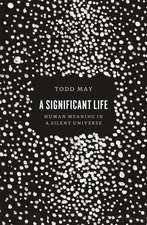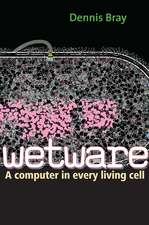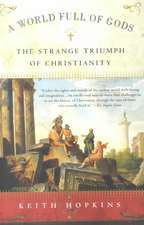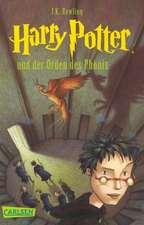CHAOS : Making a New Science
Autor James Gleicken Limba Engleză Paperback – 31 aug 2008 – vârsta de la 18 ani
The million-copy bestseller by National Book Award nominee and Pulitzer Prize finalist James Gleick that reveals the science behind chaos theory
National bestseller
More than a million copies sold
A work of popular science in the tradition of Stephen Hawking and Carl Sagan, this 20th-anniversary edition of James Gleick’s groundbreaking bestseller Chaos introduces a whole new readership to chaos theory, one of the most significant waves of scientific knowledge in our time. From Edward Lorenz’s discovery of the Butterfly Effect, to Mitchell Feigenbaum’s calculation of a universal constant, to Benoit Mandelbrot’s concept of fractals, which created a new geometry of nature, Gleick’s engaging narrative focuses on the key figures whose genius converged to chart an innovative direction for science. In Chaos,Gleick makes the story of chaos theory not only fascinating but also accessible to beginners, and opens our eyes to a surprising new view of the universe.
| Toate formatele și edițiile | Preț | Express |
|---|---|---|
| Paperback (2) | 68.93 lei 23-34 zile | +24.47 lei 7-13 zile |
| Vintage Publishing – 24 feb 1997 | 68.93 lei 23-34 zile | +24.47 lei 7-13 zile |
| Penguin Books – 31 aug 2008 | 129.73 lei 3-5 săpt. |
Preț: 129.73 lei
Nou
Puncte Express: 195
Preț estimativ în valută:
24.82€ • 27.05$ • 20.92£
24.82€ • 27.05$ • 20.92£
Carte disponibilă
Livrare economică 02-16 aprilie
Preluare comenzi: 021 569.72.76
Specificații
ISBN-13: 9780143113454
ISBN-10: 0143113453
Pagini: 360
Ilustrații: 8-page color insert; 2-page b/w insert; b/w illustrations throughout
Dimensiuni: 140 x 216 x 30 mm
Greutate: 0.45 kg
Ediția:Revizuită
Editura: Penguin Books
ISBN-10: 0143113453
Pagini: 360
Ilustrații: 8-page color insert; 2-page b/w insert; b/w illustrations throughout
Dimensiuni: 140 x 216 x 30 mm
Greutate: 0.45 kg
Ediția:Revizuită
Editura: Penguin Books
Cuprins
Chaos Prologue
The Butterfly Effect
Edward Lorenz and his toy weather. The computer misbehaves. Long-range forecasting is doomed. Order masquerading as randomness. A world of nonlinearity. "We completely missed the point."
Revolution
A revolution in seeing. Pendulum clocks, space balls, and playground swings. The invention of the horseshoe. A mystery solved: Jupiter's Great Red Spot.
Life's Ups and Downs
Modeling wildlife populations. Nonlinear science, "the study of non-elephant animals." Pitchfork bifurcations and a ride on the Spree. A movie of chaos and a messianic appeal.
A Geometry of Nature
A discovery about cotton prices. A refugee from Bourbaki. Transmission errors and jagged shores. New dimensions. The monsters of fractal geometry. Quakes in the schizosphere. From clouds to blood vessels. The trash cans of science. "To see the world in a grain of sand."
Strange Attractors
A problem for God. Transitions in the laboratory. Rotating cylinders and a turning point. David Ruelle's idea for turbulence. Loops in phase space. Mille-feuilles and sausage. An astronomer's mapping. "Fireworks or galaxies."
Universality
A new start at Los Alamos. The renormalization group. Decoding color. The rise of numerical experimentation. Mitchell Feigenbaum's breakthrough. A universal theory. The rejection letters. Meeting in Como. Clouds and paintings.
The Experimenter
Helium in a Small Box. "Insolid billowing of the solid." Flow and form in nature. Albert Libchaber's delicate triumph. Experiment joins theory. From one dimension to many.
Images of Chaos
The complex plane. Surprise in Newton's method. The Mandelbrot set: sprouts and tendrils. Art and commerce meet science. Fractal basin boundaries. The chaos game.
The Dynamical Systems Collective
Santa Cruz and the sixties. The analog computer. Was this science? "A long-range vision." Measuring unpredictability. Information theory. From microscale to macroscale. The dripping faucet. Audiovisual aids. An era ends.
Inner Rhythms A misunderstanding about models. The complex body. The dynamical heart. Resetting the biological clock. Fatal arrhythmia. Chick embryos and abnormal beats. Chaos as health.
Chaos and Beyond
New beliefs, new definitions. The Second Law, the snowflake puzzle, and loaded dice. Opportunity and necessity.
Afterword
Notes on Sources and Further Reading
Acknowledgments
Index
The Butterfly Effect
Edward Lorenz and his toy weather. The computer misbehaves. Long-range forecasting is doomed. Order masquerading as randomness. A world of nonlinearity. "We completely missed the point."
Revolution
A revolution in seeing. Pendulum clocks, space balls, and playground swings. The invention of the horseshoe. A mystery solved: Jupiter's Great Red Spot.
Life's Ups and Downs
Modeling wildlife populations. Nonlinear science, "the study of non-elephant animals." Pitchfork bifurcations and a ride on the Spree. A movie of chaos and a messianic appeal.
A Geometry of Nature
A discovery about cotton prices. A refugee from Bourbaki. Transmission errors and jagged shores. New dimensions. The monsters of fractal geometry. Quakes in the schizosphere. From clouds to blood vessels. The trash cans of science. "To see the world in a grain of sand."
Strange Attractors
A problem for God. Transitions in the laboratory. Rotating cylinders and a turning point. David Ruelle's idea for turbulence. Loops in phase space. Mille-feuilles and sausage. An astronomer's mapping. "Fireworks or galaxies."
Universality
A new start at Los Alamos. The renormalization group. Decoding color. The rise of numerical experimentation. Mitchell Feigenbaum's breakthrough. A universal theory. The rejection letters. Meeting in Como. Clouds and paintings.
The Experimenter
Helium in a Small Box. "Insolid billowing of the solid." Flow and form in nature. Albert Libchaber's delicate triumph. Experiment joins theory. From one dimension to many.
Images of Chaos
The complex plane. Surprise in Newton's method. The Mandelbrot set: sprouts and tendrils. Art and commerce meet science. Fractal basin boundaries. The chaos game.
The Dynamical Systems Collective
Santa Cruz and the sixties. The analog computer. Was this science? "A long-range vision." Measuring unpredictability. Information theory. From microscale to macroscale. The dripping faucet. Audiovisual aids. An era ends.
Inner Rhythms A misunderstanding about models. The complex body. The dynamical heart. Resetting the biological clock. Fatal arrhythmia. Chick embryos and abnormal beats. Chaos as health.
Chaos and Beyond
New beliefs, new definitions. The Second Law, the snowflake puzzle, and loaded dice. Opportunity and necessity.
Afterword
Notes on Sources and Further Reading
Acknowledgments
Index
Recenzii
“ Fascinating . . . almost every paragraph contains a jolt.” —The New York Times
“ Taut and exciting . . . a fascinating illustration of how the pattern of science changes.” —The New York Times Book Review
“ Highly entertaining . . . a startling look at newly discovered universal laws.” —Chicago Tribune
“ An awe-inspiring book. Reading it gave me that sensation othat someone had just found the light switch.” —Douglas Adams, author of The Hitchhiker’s Guide to the Galaxy
“Chaos is a feast.” —The Washington Post Book World
Notă biografică
James Gleick was born in New York City in 1954. He worked for ten years as an editor and reporter for The New York Times, founded an early Internet portal, the Pipeline, and has written several books of popular science, including The Information: A History, a Theory, a Flood, which won the Pen/E. O. Wilson Literary Science Writing Award. He lives in Key West and New York.
Descriere
Descriere de la o altă ediție sau format:
Uncover one of the most exciting frontiers of modern physics in this fascinating, insightful and accessible overview of Chaos theory.
‘An exceedingly readable introduction to a new intellectual world’ Observer
From the turbulence of the weather to the complicated rythmns of the human heart, ‘chaos’ is at the centre of our day to day lives. Cutting across several scientific disciplines, James Gleick explores and elucidates the science of the unpredicatable with an immensely readable narrative style and flair.
‘An awe-inspiring book. Reading Chaos gave me the sensation that someone had just found the light-switch’ Douglas Adams





















